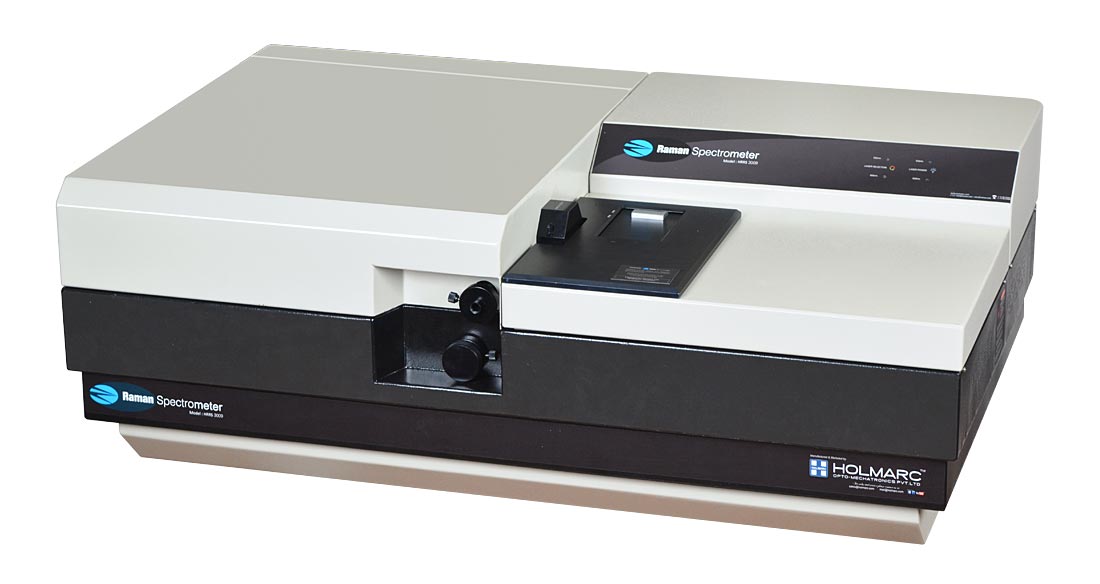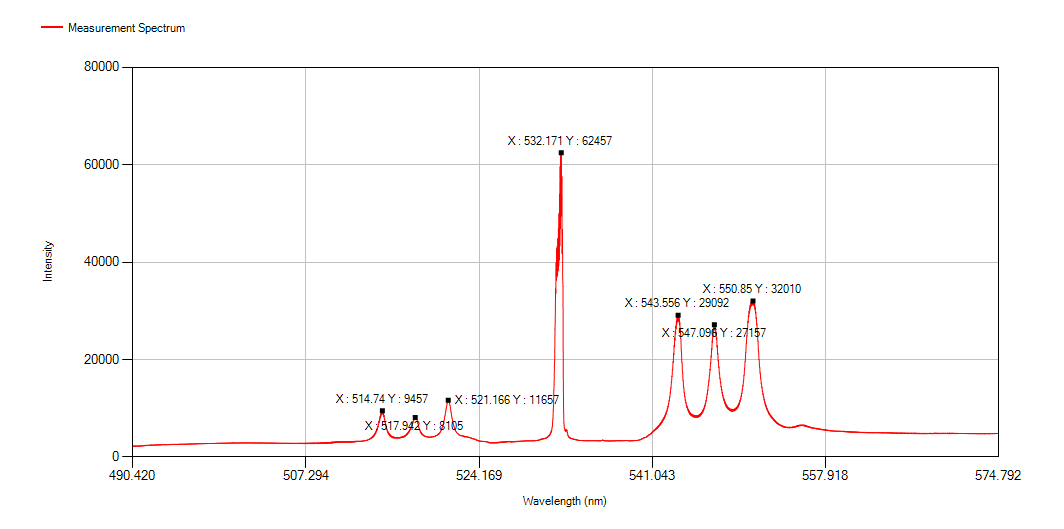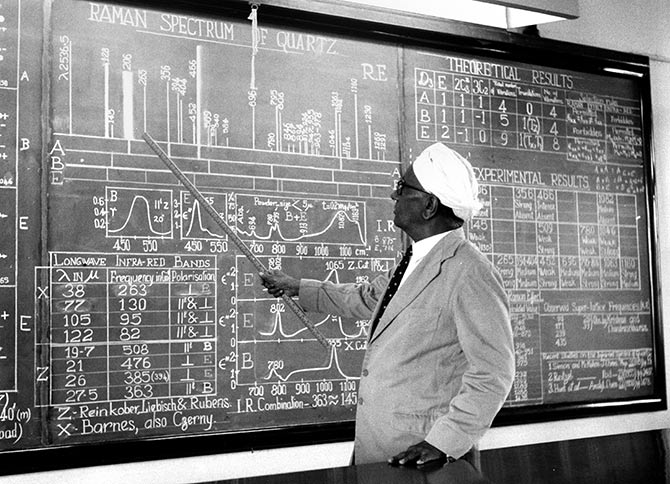
Raman Spectroscopy experiment
Raman Spectroscopy setup.

Spectrum of Titanium dioxide (TiO2)
Spectrum of Titanium dioxide (TiO2) taken from the Raman spectrum experiment.

The Raman spectroscopy is one of the important tools in physics and chemistry to identify the elements. Raman spectroscopy is an inelastic scattering of monochrome light, inelastic scattering that the frequency of light changes upon interaction with a sample. Frequency of the reemitted photons is shifted up or down in comparison with original monochromatic frequency, which is called the Raman effect. This shift provides information about vibrational, rotational and other low frequency transitions in molecules. Raman spectroscopy can be used to study solid, liquid and gaseous samples. Here in this experiment we see the stokes and antistokes line on both side, we could see the Raman scattering in this experiments. A powerful green (532nm) laser is used here and a astronomical grade cool CCD camera is used to detect the Raman scattering.

Raman Spectroscopy setup.

Spectrum of Titanium dioxide (TiO2) taken from the Raman spectrum experiment.
